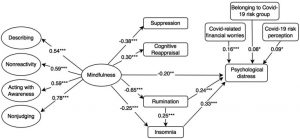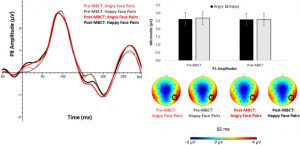Improve the Psychological Well-Being of Sexual Minorities (LBGQ) with Mindfulness
By John M. de Castro, Ph.D.
“It is revolutionary for any trans person to choose to be seen and visible in a world that tells us we should not exist.” —Laverne Cox
Around 43,000 people take their own lives each year in the US. The problem is far worse than these statistics suggest as it has been estimated that for every completed suicide there were 12 unsuccessful attempts. In other words, about a half a million people in the U.S. attempt suicide each year. Indeed, suicide is the second leading cause of death in adolescents. Suicidality and self-injury are particularly problematic in sexual minorities (LBGTQ).
One of the few treatments that appears to be Dialectical Behavior Therapy (DBT). It is targeted at changing the problem behaviors characteristic including self-injury. Behavior change is accomplished through focusing on changing the thoughts and emotions that precede problem behaviors, as well as by solving the problems faced by individuals that contribute to problematic thoughts, feelings and behaviors. In DBT five core skills are practiced; mindfulness, distress tolerance, emotion regulation, the middle path, and interpersonal effectiveness. DBT has been found to reduce suicidality. There is thus a need to study the effectiveness of DBT for the mental health of sexual minority adolescents.
In today’s Research News article “Dialectical behavior therapy for adolescents (DBT-A): Outcomes among sexual minorities at high risk for suicide.” (See summary below or view the full text of the study at: https://www.ncbi.nlm.nih.gov/pmc/articles/PMC9233065/ ) Poon and colleagues recruited heterosexual and sexual minority (LGBQ) adolescents (13-18 years of age). They received and 18-week program of Dialectical Behavior Therapy (DBT). They completed online measures before and after treatment of emotion regulation, anxiety, depression, coping, and borderline symptoms.
They found that after treatment the adolescents had significant decreases in depression, borderline symptoms, and dysfunctional coping and significant increases in emotion regulation and use of coping skills. There were no significant differences between the improvements seen with the sexual minority and heterosexual adolescents.
Hence, Dialectical Behavior Therapy (DBT) Produces significant improvements in the psychological well-being of sexual minority adolescents and is as effective as it is in heterosexual adolescents. Although not measured these improvements would predict a decrease in suicidality.
“Shame creates lies about how men should think and act, and when men don’t fulfill those roles, they have additional shame.” ― Liz Plank
CMCS – Center for Mindfulness and Contemplative Studies
This and other Contemplative Studies posts are also available on Twitter @MindfulResearch
Study Summary
Poon J, Galione JN, Grocott LR, Horowitz KJ, Kudinova AY, Kim KL. Dialectical behavior therapy for adolescents (DBT-A): Outcomes among sexual minorities at high risk for suicide. Suicide Life Threat Behav. 2022 Jun;52(3):383-391. doi: 10.1111/sltb.12828. Epub 2022 Jan 12. PMID: 35019159; PMCID: PMC9233065.
Abstract
The alarming rates and pervasiveness of suicidal and self-destructive behaviors (e.g., non-suicidal self-injury) among young sexual minorities represent a major public health concern. We set out to examine whether an empirically driven treatment for suicide and self-harm, dialectical behavior therapy for adolescents (DBT-A), provides benefits for adolescents who identify as gay, lesbian, bisexual, or questioning (LGBQ). LGBQ adolescents (n = 16) were compared with non-LGBQ peers (n = 23). Psychological measures were collected before and after participation in a comprehensive DBT-A program. LGBQ participants demonstrated significant improvements in emotion regulation, depression, borderline symptoms, and coping strategies; changes were comparable to their heterosexual peers.
https://www.ncbi.nlm.nih.gov/pmc/articles/PMC9233065/









